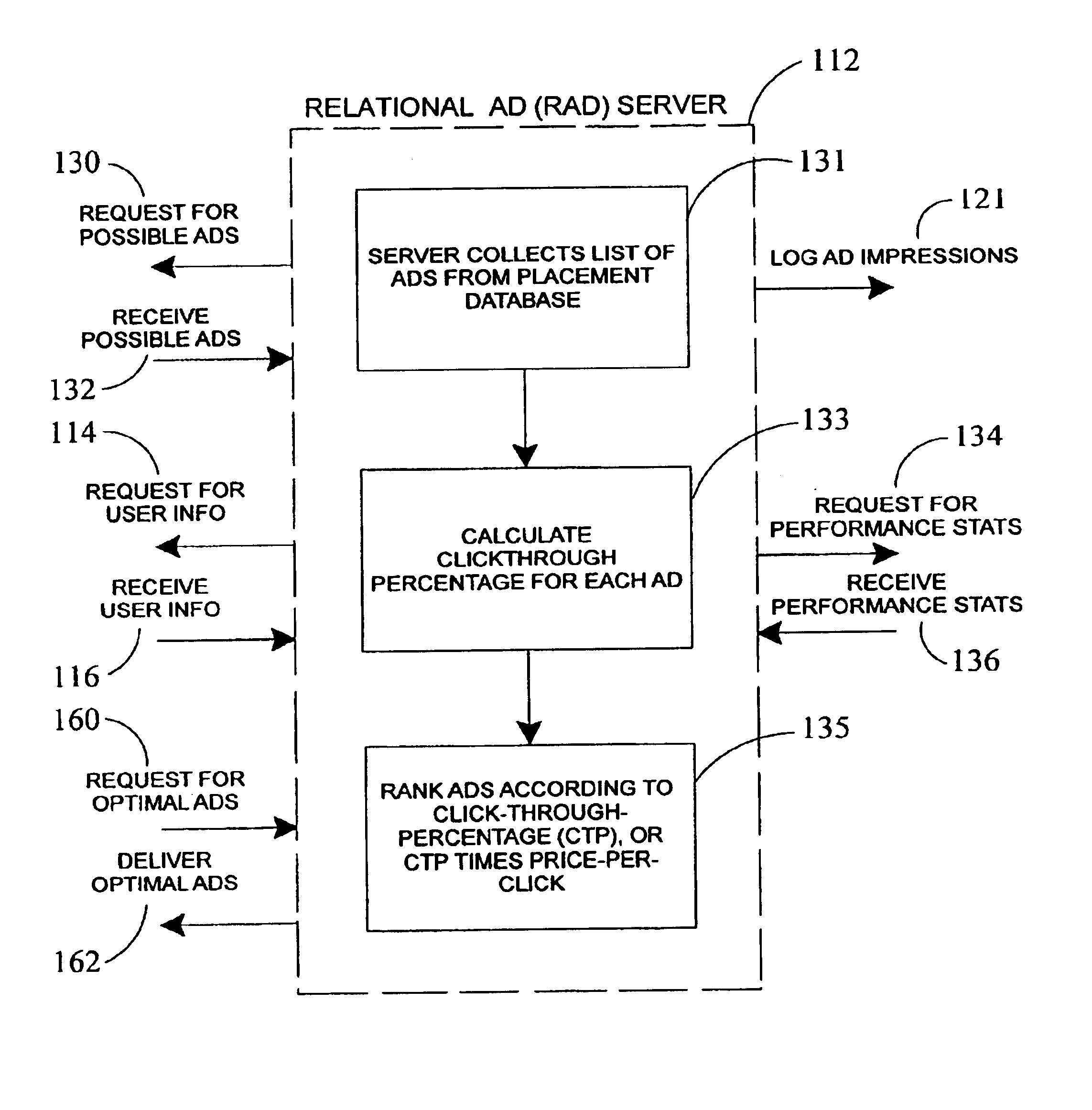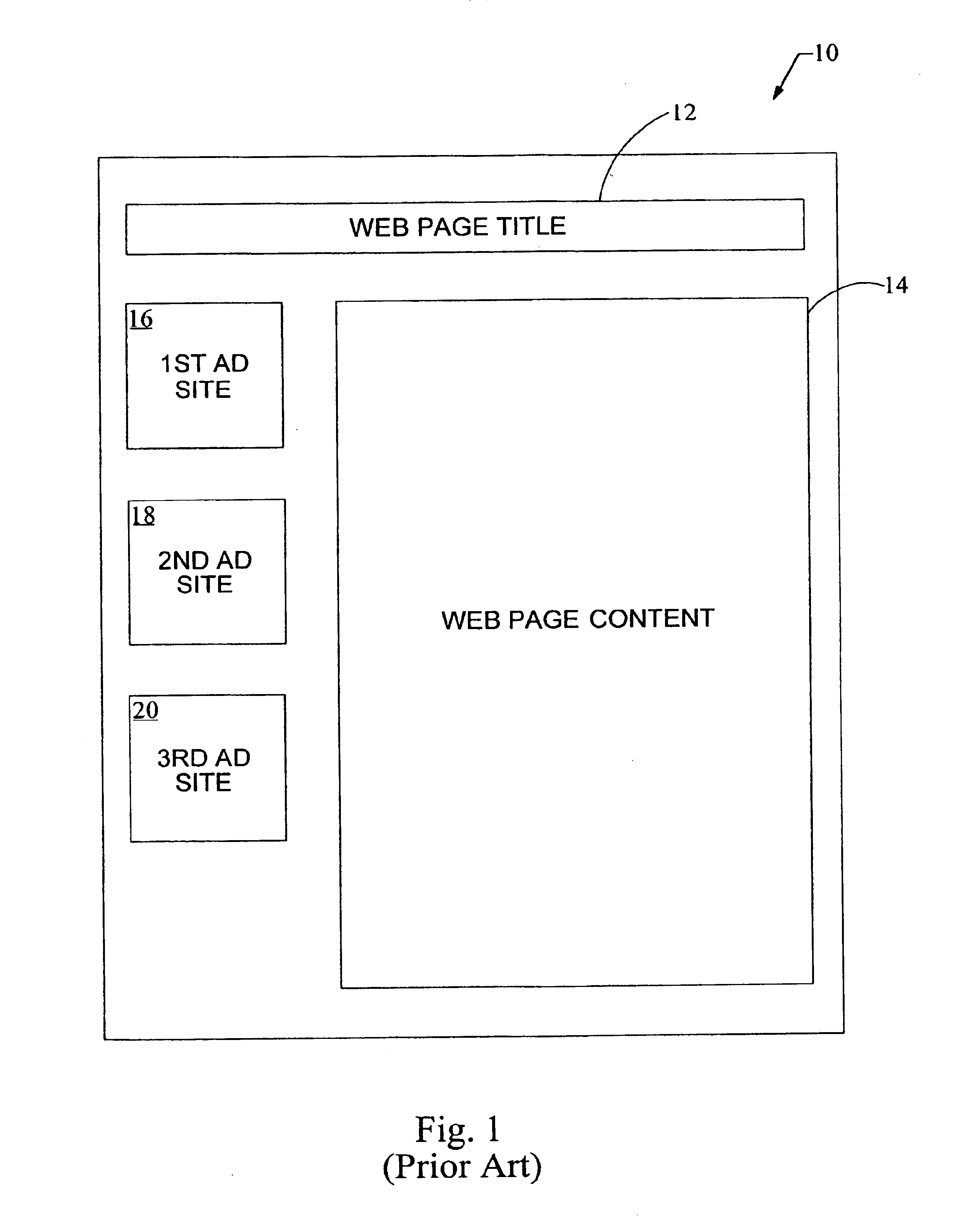Method and system for optimum placement of advertisements on a webpage
a webpage and advertisement technology, applied in the field of optimum placement of advertisements on the webpage, can solve the problems of affecting the price charged, costly expenditure of advertisers, and return of revenues, and achieve the effect of minimizing the slow down of the overall system
- Summary
- Abstract
- Description
- Claims
- Application Information
AI Technical Summary
Benefits of technology
Problems solved by technology
Method used
Image
Examples
Embodiment Construction
[0031]The present invention provides a method and system for optimizing the event occurrences for graphical objects on a page. More specifically and for discussion purposes, a method and system are provided for optimizing revenues generated by a webpage. Optimization occurs through ranking of the ads (or topics) according to a click-through-percentage generated for each ad. The page might further be optimized by ranking the ads according to cost-per-click multiplied times the click-through-percentage. This will create a webpage that has both a high likelihood of click-throughs, and maximum revenue for each click-through that actually occurs. A detailed description of the invention is provided with respect to FIGS. 1-6.
[0032]FIG. 1 shows a generalized block diagram layout of a prior art webpage 10. This page contains a web page title block 12, and a web page content block 14. A sequence of ad sites 16-20 are shown which receive and display ads configured to fit in these spots. In the...
PUM
 Login to View More
Login to View More Abstract
Description
Claims
Application Information
 Login to View More
Login to View More - R&D
- Intellectual Property
- Life Sciences
- Materials
- Tech Scout
- Unparalleled Data Quality
- Higher Quality Content
- 60% Fewer Hallucinations
Browse by: Latest US Patents, China's latest patents, Technical Efficacy Thesaurus, Application Domain, Technology Topic, Popular Technical Reports.
© 2025 PatSnap. All rights reserved.Legal|Privacy policy|Modern Slavery Act Transparency Statement|Sitemap|About US| Contact US: help@patsnap.com



